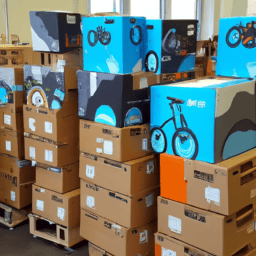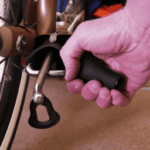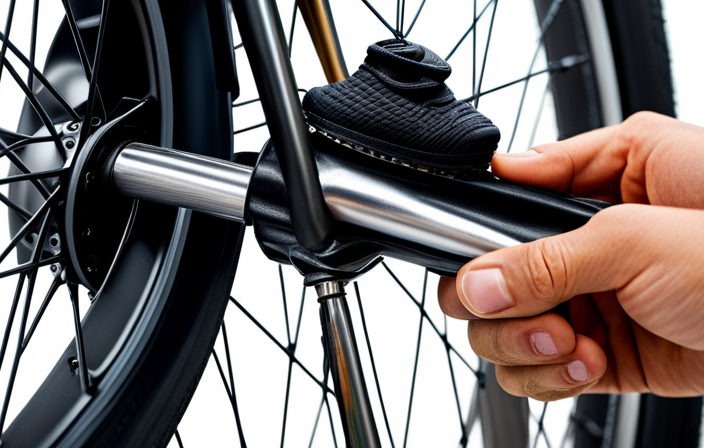As a passionate cyclist, I frequently embark on journeys to new places to experience the beauty of nature from the seat of my bicycle. Yet, ensuring my bicycle is transported in a safe and secure manner often presents a significant challenge. A key factor in this process is selecting a bicycle box of the appropriate size to safeguard my valued bike while it is being moved.
Understanding the Importance of Bicycle Box Size is crucial to ensuring your bike arrives at its destination in the same condition it left. The wrong box size can result in damage to the frame, wheels, and other components, which can be costly to repair or replace.
In this article, I will explore common bicycle box sizes, how to determine the right size for your bike, and tips for packing your bicycle. Whether you are a seasoned cyclist or a beginner, this guide will provide you with the information you need to transport your bike with confidence.
Key Takeaways
- Bicycle box size is important for protecting a bike during transit, and choosing the right size is crucial to prevent damage.
- Non-standard bicycles may require different box sizes, so it’s important to measure the bike’s dimensions to determine the right size box.
- Packing materials and techniques are also important to ensure the safety of the bike during transport, including securing fragile parts and removing pedals and handlebars.
- Different carriers and shipping options may have specific size and weight restrictions, so it’s important to check guidelines and choose the option that best suits individual needs.
Understanding the Importance of Bicycle Box Size
You’ve probably wondered why bicycle box size is so important, haven’t you? Well, let me tell you, it can make all the difference when it comes to keeping your bike safe during transport.
Using a bicycle box provides numerous benefits for shipping a bike, especially when sending it internationally. Firstly, a bicycle box helps to protect your bike from damage during transport. By enclosing it in a box, you can prevent scratches, dents, and other forms of damage that can occur during transit. This is especially important when shipping expensive or delicate bikes.
In addition to providing protection, using a bicycle box can also make it easier to transport your bike. Most airlines and shipping companies have specific size requirements for packages, and using a bicycle box ensures that your bike meets these requirements. This can save you time and money by avoiding additional fees or delays.
When shipping internationally, it’s important to keep in mind that different countries may have specific regulations for importing bikes. By following tips for shipping a bike internationally and using a bicycle box, you can ensure that your bike arrives at its destination safely and without any issues.
Now, let’s take a closer look at common bicycle box sizes.
Common Bicycle Box Sizes
When it comes to shipping or traveling with a bicycle, it’s important to know the common bicycle box sizes.
For standard-sized bicycles, the most common dimensions are 54’x8’x29′.
However, for non-standard bicycles such as folding bikes or recumbent bikes, other sizes may be necessary.
Dimensions for Standard-Sized Bicycles
If you’re wondering how big a standard-sized bicycle box is, it typically measures around 54 inches in length, 28 inches in height, and 8 inches in width. However, these measurements can vary slightly depending on the specific type of bicycle being boxed up.
For example, mountain bike dimensions may require a slightly larger box due to the wider handlebars and overall bulkier frame. Similarly, road bike measurements may require a narrower box due to the more streamlined design.
It’s important to note that these dimensions are only for standard-sized bicycles. Other sizes for non-standard bicycles, such as children’s bikes or e-bikes, may require different box sizes.
It’s always a good idea to check with the manufacturer or a bike-specific retailer to ensure you’re getting the right box for your specific bike.
Other Sizes for Non-Standard Bicycles
Don’t settle for a box that might not fit your beloved e-bike, tandem bicycle, or child’s recumbent bike. It’s crucial to check with the manufacturer or a trusted bike shop to ensure that you have the correct dimensions for your non-standard bicycle.
Here are some examples of non-standard bicycles and their sizes:
-
Foldable bikes can vary greatly in size depending on their design. Some foldable bikes may fit into a standard bicycle box, while others may require a larger box or a custom-made box.
-
Tandem bicycles are longer and wider than standard bicycles, and will require a larger box.
-
Electric bikes are often heavier and bulkier than traditional bikes, and will require a larger box or a custom-made box.
-
Recumbent bicycles have a unique design and may require a custom-made box to fit properly.
-
Cargo bikes are even larger and heavier than electric bikes, and will require a custom-made box.
It’s important to note that these are just a few examples, and that there are many other non-standard bicycles that may require a custom-made box.
Determining the right size for your bike is crucial to ensure that it’s protected during transport.
Determining the Right Size for Your Bike
Simply measure your bike’s length and height, taking into account any additional accessories that may increase its size, such as a bike rack or fenders. Sizing considerations are crucial when determining the right size for your bike box. It’s better to choose a box that’s slightly larger to ensure a safe and snug fit during transport.
When measuring your bike, start at the front wheel axle and measure to the rear wheel axle, including the pedals and handlebars. Then, measure the height from the ground to the highest point, usually the seat or handlebars. Once you have these dimensions, choose a box that’s slightly larger, at least 6 inches longer and 4 inches taller than your bike, to provide sufficient space for padding and packing materials.
With the right size box, you can ensure that your bike is protected during transport. When it comes to packing your bicycle, there are certain tips and tricks that can help you keep your bike safe and secure during transport.
Tips for Packing Your Bicycle
To ensure the safety of your beloved ride, follow these expert tips for packing your bike for transport.
First, choose the right materials for packing. You’ll need a sturdy cardboard box that’s big enough to accommodate your bike. Most bicycle boxes come in standard sizes, but it’s important to measure your bike and choose the right size accordingly. You may also want to invest in bubble wrap, foam padding, and packing tape to further protect your bike from damage.
Next, secure all the fragile parts of your bike. This includes the handlebars, pedals, and wheels. Remove the pedals and handlebars, and pack them separately in a bubble wrap or foam padding. Use zip ties to keep the wheels in place and prevent them from moving around during transport. Remember to loosen the bolts on the stem and handlebars to avoid any damage to the fork.
Once everything is packed securely, tape the box shut and label it clearly with your name and destination. With these tips, your bike should arrive at its destination in perfect condition.
When it comes to additional considerations for packing your bike, there are a few things to keep in mind. These include checking with your airline or shipping company for any specific guidelines or restrictions and ensuring that the box is properly labeled with your contact information. It may also be helpful to take photos of your bike before packing it in case there is any damage during transport. By taking these extra steps, you can give yourself peace of mind and ensure that your bike arrives safely.
Additional Considerations
Before embarking on your bike trip, it’s important to be aware of any specific guidelines or restrictions set by your airline or shipping company. One of the most important considerations is the weight of your bicycle box. Most airlines and shipping companies have weight restrictions, which can vary depending on the carrier and the destination. It’s important to check the weight limit before packing your bike to avoid any additional fees or delays.
Another important consideration is the shipping options available for your bicycle box. Depending on your destination and budget, you may have several options to choose from, including air freight, ground transportation, or even sea freight. Each option has its own pros and cons, so it’s important to do your research and choose the option that best suits your needs.
Some carriers may also offer additional services, such as insurance or tracking, which can provide added peace of mind during transit. By considering these additional factors, you can ensure that your bike arrives at your destination safely and on time.
Frequently Asked Questions
How much does a typical bicycle box weigh?
When it comes to packing a bike for shipping, it’s important to consider the weight of the box. Bicycle box dimensions vary, but the best ways to pack a bike involve minimizing excess space and padding to protect the bike during transit.
Can I reuse a bicycle box for multiple trips?
I would not recommend reusing a bicycle box for multiple trips. Using a custom box offers benefits such as increased durability and protection for your bike. Alternatives to using a bicycle box for transportation include soft bike bags or hard-shell cases.
What materials are commonly used to make bicycle boxes?
After conducting research on common bicycle box sizes and dimensions, I discovered that the materials used vary. However, cardboard is a popular choice due to its affordability and recyclability. It is important to consider the environmental impact of these materials.
How do I secure my bike inside the box to prevent damage during transport?
To prevent damage during transport, proper bike disassembly is key. Bike packing tips include removing pedals, handlebars, and wheels, and securely fastening them in the box. Padding can also be added for extra protection.
Are there any specific airlines or shipping companies that specialize in transporting bicycles?
I researched specialized bicycle shipping services and compared costs. Some offer door-to-door delivery, while others require drop-off at a hub. Prices vary based on distance and level of service.
Conclusion
In conclusion, choosing the right bicycle box size is crucial in ensuring the safe transportation of your bike. As I’ve learned, there are common bicycle box sizes you can choose from, but it’s important to determine the right size that fits your bike’s dimensions. It’s also essential to pack your bike properly with the right materials to prevent any damage during transit.
Did you know that cycling has increased by 20% in the last decade in Europe alone, according to a study by the European Cyclists’ Federation? With more and more people choosing to cycle, the need for safe and efficient transportation of bikes is becoming increasingly important. Therefore, understanding the importance of bicycle box size and proper packing techniques is essential for any cyclist who wants to travel with their bike.
Remember to take into account the additional considerations, such as airline regulations and weight limits, to ensure a hassle-free journey with your beloved bicycle.
















